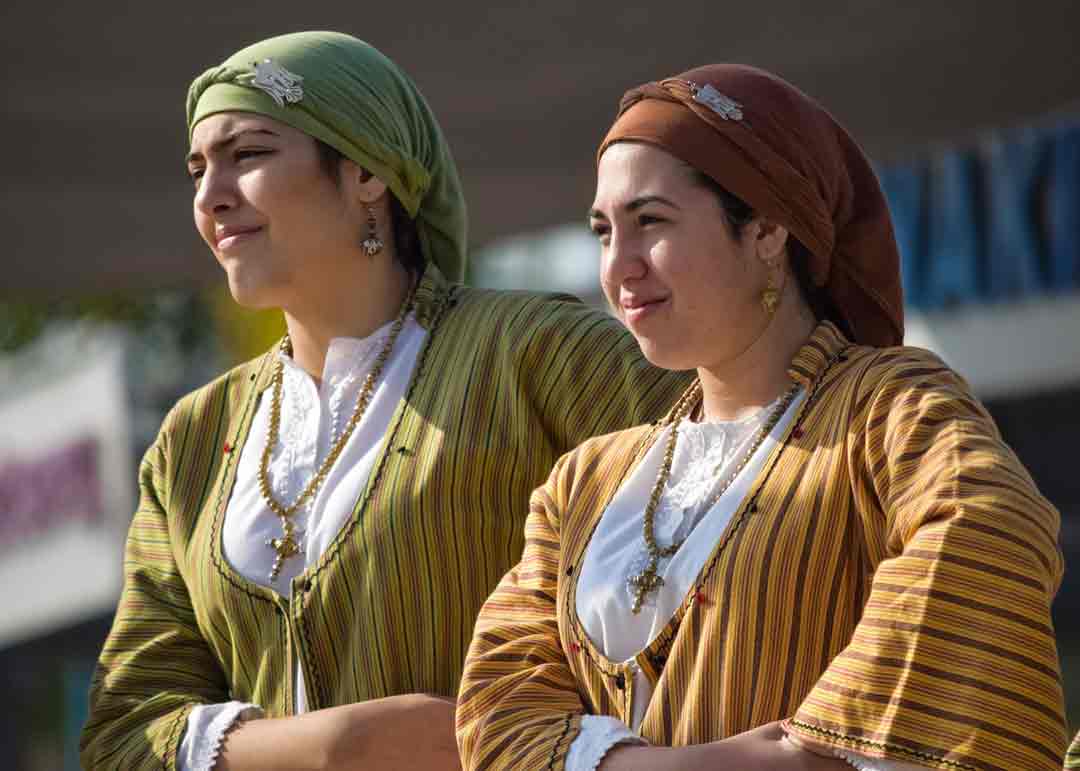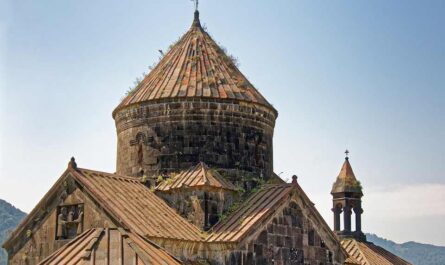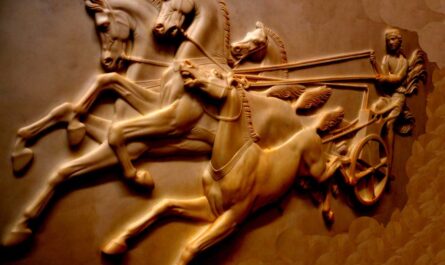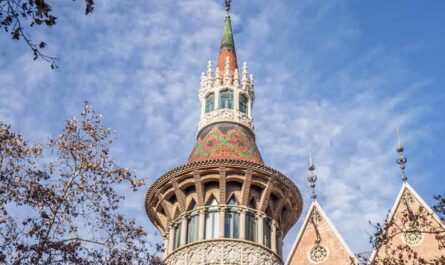There are plenty of interesting facts about the beautiful Hungary. There is no end to learning about the prospective, clean country of Hungary and its many facts. Hungary, nestled in the heart of Central Europe, boasts a rich tapestry of nature, culture, and history that captivates visitors from around the globe. Its diverse landscapes, including the Great Hungarian Plain, the rolling hills of Transdanubia, and the picturesque Lake Balaton, make Hungary a haven for nature lovers. In this article, I’m going to talk about interesting facts about Hungary.
Interesting Facts about Hungary: Past, Present, Future
Law and order in Hungary are maintained efficiently, creating a safe environment for residents and visitors alike. The country’s commitment to education is evident in its well-established institutions, including Eötvös Loránd University and Central European University. Hungary’s narrative extends far beyond geographical borders, weaving a rich tapestry of triumphs in sports, relaxation havens, and intellectual prowess. These facets collectively define Hungary’s identity, making it a nation of multifaceted excellence that captivates and inspires on both the world stage and within the hearts of its citizens. Let’s find below some interesting facts about Hungary:
1. Hungary quick facts
- Total Population: 9,690,988.
- Highest Mountain: Kékes at 1014 meters above sea level.
- Land area: 93,028 km2
- Member of EU: Since 2004.
- Member of NATO: Yes.
- National song: “Himnusz” (Hymn)
- Time zone: CET (UTC +1), summertime, CEST (UTC +2)
- Country Number/Prefix: +36
- National Day: 20 August.
- Government: Unitary parliamentary constitutional republic
- Primary minister: Viktor Orbán.
- Currency: Hungarian Forint (HUF)
- Official language: Hungarian.
- Official Website: Kormany.hu
- Country Code: HU
- Capital: Budapest
- Borders: Slovakia, Romania, Serbia, Croatia, Slovenia, Austria, Ukraine
- Biggest Lake: Balaton – 592 km2
2. Hungary’s Olympic Success
Hungary boasts an illustrious history in the realm of Olympic competition, having clinched gold medals with unwavering consistency across every edition they have partaken in. This remarkable feat underscores Hungary’s prowess in various sporting disciplines, cementing its status as a formidable force on the global athletic stage. From the resounding cheers of triumph to the sweat and determination etched on the faces of Hungarian athletes, each gold medal stands as a testament to the nation’s enduring commitment to excellence in the pursuit of sporting glory.
3. Coffee’s Journey to Hungary: A 16th-Century Delight
In the rich tapestry of Hungary’s history, a delightful thread weaves through the 16th century – the arrival of coffee, a beverage that would carve its place in Hungarian culture. The Turks, in a gesture of cultural exchange, introduced coffee to Hungary during this epoch. Remarkably, the newfound elixir earned the moniker “fekete leves,” translating to black soup. This fascinating detail underscores Hungary’s openness to diverse influences and the evolution of its culinary palette. It symbolizes a historical crossroads where global flavors met local sensibilities, leaving an indelible mark on the nation’s gastronomic identity.
4. Etymology of Hungary
The appellation “Hungary” is a linguistic tapestry woven through the annals of time, with its threads reaching back to Medieval Latin. The etymological roots unfurl, suggesting a derivation from the Medieval Latin term “Hungaria,” resonating with the evocative meaning of “Land of the Huns.” Delving deeper into the lexical labyrinth, an alternative hypothesis surfaces, proposing a connection to Turkish lexemes. Here, “on ogur” emerges, an assemblage imbued with the essence of “ten arrows” or “ten peoples.” The nomenclature of Hungary thus intertwines historical echoes, offering a narrative rich in linguistic resonance.
5. Hungarian Diaspora
The demographic diaspora of Hungary extends beyond its national borders, with approximately one-third of native Hungarians, a staggering five million individuals, establishing their homes on foreign soil. Predominantly, these expatriates find themselves rooted in the verdant expanses of Romania, while a substantial presence is also witnessed in the neighboring countries contiguous to Hungary. This dispersion of Hungarian identity serves as a testament to the intricate tapestry of cultural intermingling that extends far beyond the geographical confines of the nation.
6. Culinary Lexicon: Szalonnasütés
Within the culinary lexicon of Hungary, an intriguing revelation emerges with the term “szalonnasütés,” translating to “bacon cooking.” This lexical gem encapsulates not just the act of culinary creation but also the cultural ethos intertwined with gastronomy. In the hallowed tradition of Hungarian bacon preparation, a culinary symphony unfolds as a chunk of bacon is ceremoniously held over an open flame, the dance of flames orchestrating the transformation of raw meat into a sizzling, succulent delight. The very essence of szalonnasütés embodies the culinary poetry that defines Hungarian gastronomy, where each dish tells a story of tradition and taste.
7. Budapest: A Confluence of Ages and Waters
The majestic capital of Hungary, Budapest, is a testament to the confluence of time and geography. Its roots extend far beyond the 16th century, reaching back to the Bronze and Iron Age when it first emerged as a settlement. However, the Budapest we recognize today emerged in 1873, a result of the amalgamation of three distinct cities – Pest, Buda, and Óbuda (Old Buda). Budapest stands as a living tableau, echoing the whispers of ages past and embracing a harmonious blend of historical epochs. Among its many epithets, the “City of Baths” resonates, paying homage to the thermal springs that have nurtured the city and its inhabitants for centuries. Budapest, with its architectural splendor and historical depth, becomes not just a city but a living, breathing chronicle of human existence.
8. The Magyars: Archers of Divine Worry
In the annals of medieval history, the Magyars stand out as formidable warriors, their prowess with bows and arrows so renowned that it echoed in the Christian prayers of the time. A poignant testament to their martial skill, a common supplication during the Middle Ages was, “Save us, o Lord, from the arrows of the Hungarians.” The Magyars’ reputation as archers struck a chord of trepidation among those who faced them, underscoring the impact of their military acumen on the collective psyche of the medieval world. This historical tidbit illuminates not only the strategic significance of the Magyars in conflicts but also the unique fusion of martial prowess and spiritual apprehension in the tapestry of medieval Europe.
9. Hungary’s Aquatic Retreats
Beyond its sporting triumphs, Hungary beckons with an abundance of relaxation and rejuvenation, as the nation boasts a staggering array of more than 1500 spas. These sanctuaries of serenity dot the Hungarian landscape, offering a diverse tapestry of therapeutic experiences. From the soothing mineral-rich waters that cradle tired bodies to the architectural splendor that envelops these wellness havens, Hungary’s spas are a testament to the country’s dedication to fostering holistic well-being amidst the hustle and bustle of modern life.
10. Hungarian Naming Traditions
In Hungary, an intriguing cultural nuance reveals itself when individuals inscribe their names or engage in public introductions: a distinctive penchant for placing their last names foremost. This idiosyncrasy sets Hungary apart, offering a glimpse into the unique social dynamics that shape the country’s identity. This cultural quirk, a subtle yet fascinating facet, underscores the richness of Hungary’s heritage and its divergence from conventional naming conventions observed elsewhere.
11. Philanthropic Legacy of George Soros
The labyrinthine corridors of Hungary’s history are adorned with the birthplace of George Soros, a luminary financier whose impact reverberates far beyond financial realms. Born on Hungarian soil, Soros has etched his legacy not merely through economic exploits but, more significantly, through an unparalleled commitment to philanthropy.
Astoundingly, his benevolence is quantified by the staggering figure of 45% of his net worth, a testament to his fervent dedication to societal betterment. In the annals of charitable giving, Soros emerges as a noteworthy figure, occupying the prestigious fifth position on Forbes.com’s philanthropist roster, trailing only the formidable trio of Bill and Melinda Gates, Warren Buffett, and Mark Zuckerberg. His altruistic pursuits, exemplified by a staggering $734 million in charitable donations in 2013, paint a vivid portrait of a man whose financial acumen is surpassed only by his humanitarian spirit.
12. Record-Breaking Currency: The Hungarian Pengő
In the post-World War II landscape of Hungary, a chapter unfurled that etched the nation into the annals of economic eccentricity. In 1946, the Hungarian government issued banknotes bearing a face value so astronomical, that it defied conventional comprehension—a mind-boggling one quintillion pengő. This colossal denomination, a numerical behemoth, catapulted Hungary into the record books, securing the dubious distinction of the world’s highest-ever currency denomination.
This financial quirk, a testament to the economic turbulence of the era, encapsulates Hungary’s resilience and the surreal fiscal challenges it faced. The one quintillion pengő note stands as an enduring symbol, a tangible reminder of a bygone economic era, echoing through the corridors of financial history with perplexing resonance.

13. Nobel Laureates of Hungary
Delving into the intellectual realm, Hungary stands proud with a notable achievement—producing a total of 13 Nobel Prize winners. These luminaries have left an indelible mark on fields ranging from physics and chemistry to literature and peace. The accolades bestowed upon these individuals illuminate Hungary’s intellectual contributions to the global community, underscoring the nation’s commitment to pushing the boundaries of knowledge and contributing to the betterment of humanity.
14. Hungary’s Olympic Achievement
Hungary boasts a remarkable Olympic legacy, standing shoulder to shoulder-with global sports powerhouses. A mere quintet of nations—the U.S., Russia, the U.K., France, and Italy—have outshone Hungary in the Summer Games’ gold medal tally. Positioned as the ninth most prolific medal earner among the 211 participating countries, Hungary clinches its place of pride with a total of 448 Olympic medals. Astonishingly, when measured against population size, Hungary claims the second spot, yielding only to Finland in the realm of Olympic medal prowess.
15. Vinicultural Heritage of Hungary
The roots of Hungary’s viticultural mastery delve deep into antiquity, tracing back to the venerable fifth century A.D. In a pivotal moment of vinous acclaim, King Karoly bestowed the distinguished title of a national wine area upon the Tokaj region in 1737. This monumental declaration etched Hungary’s name in history as the progenitor of the world’s inaugural official wine region—a distinction predated by a staggering 120 years before the renowned Bordeaux region in France garnered a similar recognition. Hungary’s vinicultural narrative, thus, stands as a testament to centuries of oenophilic finesse and innovation.
16. Hungary: An Epochal European Nation
Among the mosaic of European nations, Hungary emerges as a time-honored bastion of antiquity. Its foundational roots delve into the annals of A.D. 896, predating the establishment of nations that now stand as stalwarts of the continent—France, Germany, and England. Hungary, with its rich historical tapestry, assumes a role as one of Europe’s venerable states, embodying a legacy that precedes many of its continental counterparts. This intriguing facet of Hungary’s history adds a layer of fascination to its cultural identity and historical significance.
17. The Enigmatic Elvis Presley Boulevard in Budapest
Elvis Presley Boulevard, a name that resonates with the legendary American musician, finds an unexpected home on the outskirts of Budapest, Hungary. The juxtaposition of this dusty highway against the historical backdrop of Budapest adds a layer of intrigue to the city’s narrative. As the urban sprawl gives way to this less-traveled route, one cannot help but be captivated by the unexpected fusion of Hungarian culture and the iconic symbol of Elvis Presley. This intersection of worlds, seemingly incongruous, serves as a testament to the eclectic nature of Budapest’s urban landscape.
18. Gulyás: Hungary’s Culinary Masterpiece
Amidst the rich tapestry of Hungarian cuisine, gulyás, commonly known as goulash, stands out as the nation’s culinary masterpiece. This hearty stew, born from a melange of potatoes, beef, pork, and paprika, transcends mere sustenance to become a cultural emblem. The origins of gulyás trace back to the Magyar tribes, weaving a narrative of necessity amid their raiding and plundering. As the flavors meld in the pot, so does the history and tradition that have simmered through the centuries. Gulyás emerges not merely as a dish but as a savory embodiment of Hungary’s enduring spirit and resilience.
19. George Soros: The Unlikely Esperanto Speaker
In the enigmatic realm of languages, George Soros, the famed financier and philanthropist, holds an unexpected title — possibly the wealthiest speaker of Esperanto worldwide. Esperanto, a linguistic experiment conceived by L.L. Zamenhof in the 19th century, boasts a unique status as a man-made language designed to foster global communication. Soros’s connection to Esperanto unfolds during a pivotal moment in history — the Esperanto conference in Switzerland in 1947. At the tender age of 17, Soros was bestowed with a passport, not just as a means of linguistic expression but as a lifeline, facilitating his escape from Soviet-controlled Hungary. This anecdote paints a vivid picture of how linguistic pursuits can transcend boundaries and serve as pathways to freedom.
20. Budapest’s Thermal Springs: A Healing Oasis
Budapest, the capital of Hungary, boasts an unparalleled abundance of thermal springs, making it a global leader in this natural phenomenon. With over 1500 spas scattered across the country, Budapest stands out for its remarkable concentration of thermal springs. The therapeutic allure of these waters has been drawing people for centuries, creating a legacy of wellness and relaxation. The city pulsates with the energy of 70 million liters of thermal water, gushing to the surface daily, a testament to the geological marvel that underlies Budapest’s reputation as a haven for those seeking the healing touch of nature.
21. Naming Customs in Hungary: A Governmental Affair
In Hungary, the act of naming a child is not merely a personal choice; it is a process governed by the state. The government has compiled a meticulous list of pre-approved names, adding an intriguing layer to the cultural tapestry. Parents navigating this process find themselves constrained by the official roster, a catalog that defines the realm of permissible names. However, for those yearning to bestow upon their child a name absent from the prescribed list, a bureaucratic journey unfolds. The labyrinth of paperwork and applications becomes the gateway to the unconventional, showcasing a unique intersection of personal expression and governmental oversight.
22. The Peculiarities of the Hungarian Alphabet
Diving into the linguistic landscape of Hungary reveals a distinct feature—the Hungarian alphabet, a captivating collection of 44 letters. Unlike its European counterparts, the Hungarian language stands alone in its structure and phonetics. The 44-letter alphabet encapsulates the essence of this linguistic uniqueness, with each letter contributing to the symphony of sounds that define Hungarian communication. As a linguistic outlier, the Hungarian alphabet becomes a fascinating subject, inviting exploration into the intricacies that set it apart from the linguistic conventions of neighboring countries.
23. Houdini’s Daring Feats in Budapest
Born as Erich Weisz in Budapest in 1874, the renowned escapologist Harry Houdini etched his name into history through death-defying acts that captivated audiences worldwide. His zenith came in 1912 when he astounded spectators with the Chinese Water Torture Cell. In this mesmerizing act, Houdini, suspended by his feet, was lowered upside-down into a locked glass cupboard filled with water. The harrowing spectacle demanded him to hold his breath for an astonishing three minutes, the key to his triumphant escape from this aquatic confinement.
24. Budapest’s Chess Prodigy: Judit Polgár
Budapest has left an indelible mark in the realm of chess, boasting a legacy of champions. Among them, Judit Polgár stands out as a luminary. Rising to the coveted status of grandmaster at the tender age of 15 in 1982, she etched her name in the annals of chess history. An emblem of Budapest’s intellectual prowess, Polgár went on to become the highest-rated female chess champion globally. Notably, in 1992, she achieved an unprecedented feat by defeating the formidable Anatoly Karpov in a speed chess event, securing her place as the sole woman ever to overcome a reigning world champion.
25. Hungary’s Employment Landscape in the OECD
Within the landscape of employment statistics, Hungary holds a distinctive position within the Organization for Economic Cooperation and Development (OECD). It is noteworthy that Hungary boasts the lowest employment rate among OECD nations, with a mere 55.4% of its population actively engaged in the workforce. This intriguing facet of Hungary’s economic dynamics invites contemplation on the factors influencing its employment patterns within the broader international context.
26. Hungary’s Geographic Marvel: Central Europe’s Largest Lake
Nestled within Hungary’s picturesque landscapes lies the largest lake in Central Europe, a breathtaking geographic marvel that captivates the senses. This expansive body of water, whose beauty transcends the ordinary, adds a distinctive charm to Hungary’s diverse topography. Its sheer size and tranquility serve as a testament to Hungary’s natural wonders, drawing visitors and locals alike to its shores for a mesmerizing experience in the heart of Central Europe.
27. Historical Grandeur: The Kingdom of Hungary in the 10th Century
Embarking on a journey through the annals of time, we find Hungary emerging as a historical giant during the medieval era, particularly around the turn of the first millennium. In the early 1000s CE, the Kingdom of Hungary wielded influence that surpassed even the formidable stature of France at the time. This historical prominence places Hungary at the epicenter of European geopolitics during a pivotal period, where its territorial expanse and political significance were nothing short of awe-inspiring. Exercise Makes Life Easy: Find Your Next Steps & See Improvement
28. A Thermal Superpower Unveiled
Delving into the depths of Hungary’s unique geothermal assets, we uncover a nation that stands as a thermal superpower in the global arena. The underground reservoirs of thermal energy coursing through Hungary’s subterranean layers give rise to a distinctive status that sets the nation apart. This thermal prowess manifests in the form of natural hot springs, thermal baths, and an entire culture centered around the therapeutic qualities of these geothermal treasures. Hungary’s thermal superpower status not only enriches its cultural tapestry but also provides a soothing haven for those seeking wellness and relaxation.
More Interesting Articles




